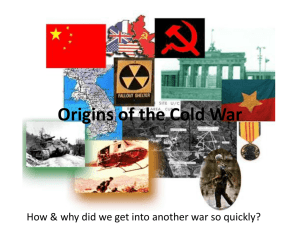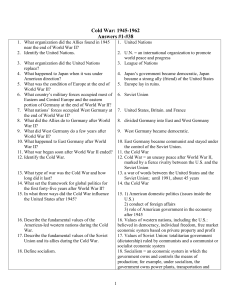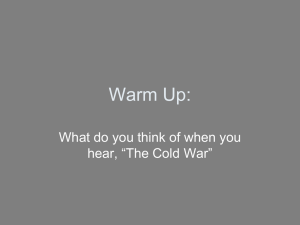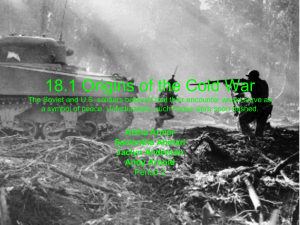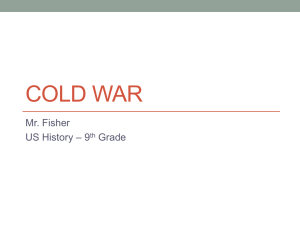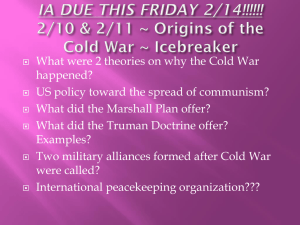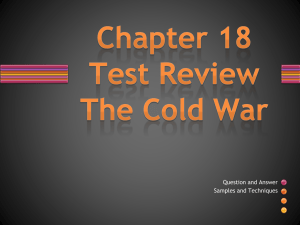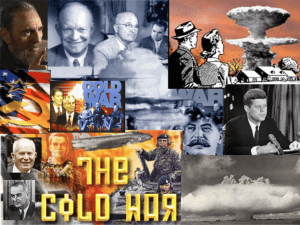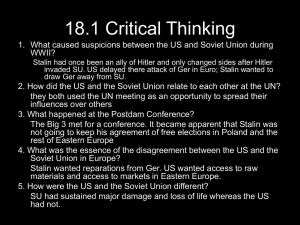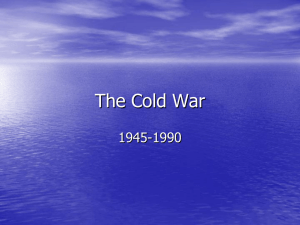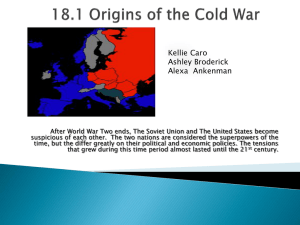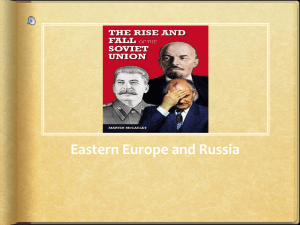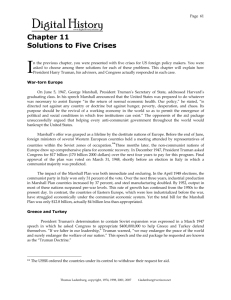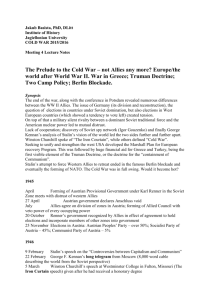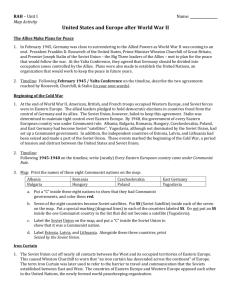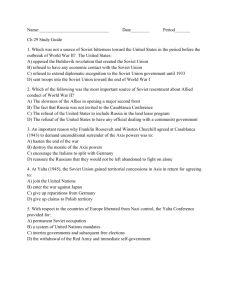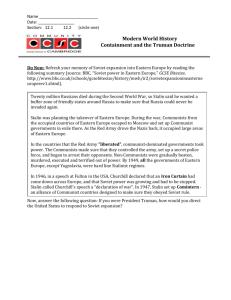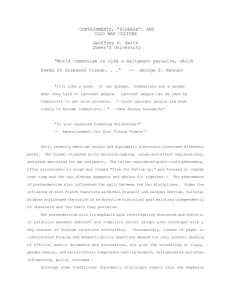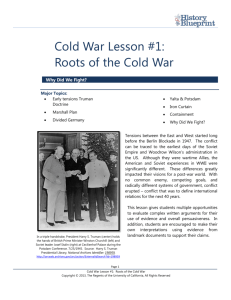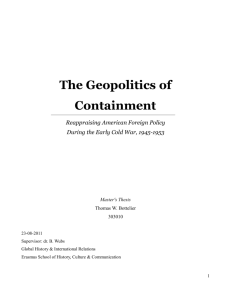Cold War: The War of Influence
advertisement
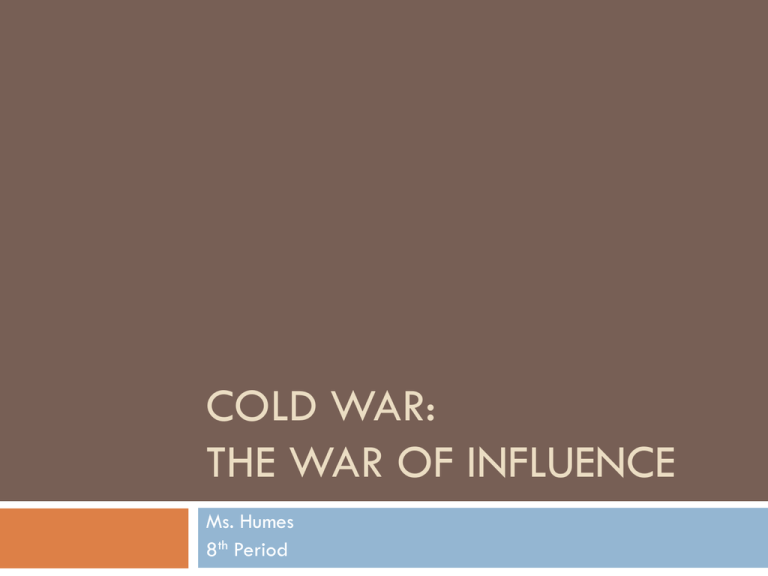
COLD WAR: THE WAR OF INFLUENCE Ms. Humes 8th Period Day 1: The Cold War Begins Objectives Trace the reasons that the wartime alliance between the United States and the Soviet Union unraveled. Explain how President Truman responded to Soviet domination of Eastern Europe. Describe the causes and results of Stalin’s blockade of Berlin. Essential Question: How did the U.S. leaders respond to the threat of Soviet expansion in Europe? How did the goals of U.S. and Soviet foreign policy differ after WWII? Soviet Union Wanted to increase the influence and extend communism; Communist dictatorship People couldn’t worship as they pleased, own private property, or express opinions freely U.S. Limit communism Rebuild the defeated nations in Europe Capitalist democracy What events caused President Truman to propose what became known as the Truman Doctrine? Greek & Turkish Governments trying to keep communists from taking over. Truman wanted to send money to support anti-communists efforts. TRUMAN DOCTRINE: Promise to aid nations struggling against communist movements Truman from small town in Missouri, was too poor to attend college. Only president in the 20th century without a college education. Fighting in WWI started his political career Why did George Kennan think that containment would work against Soviet expansion? George Kennan An American diplomat and leading authority on Soviet Union at the time. His article, “The Sources of Soviet Conduct” presented the blueprint for American policy of “containment” Containment While Stalin determined to expand Soviet empire, he would not risk security of Soviet Union for expansion. Kennan thought Soviets would expand when it could do so without serious risks. If the U.S. was patient in containing Soviet expansion, it would win in the end. What is the Marshall Plan? George S. Marshall Secretary of State Unveiled a recovery plan for Europe at Harved University Marshall Plan Premise: Without economic health, there can be no political stability and no assured peace. Over the next four years, U.S. gave $13 billion in grants and loans to nations in Western Europe. Provided food to reduce famine, fuel to heat houses and factories, and money to jump-start economic growth Provided a vivid example of how U.S. aid could serve both economic and foreign policy. Also helped American economy by increasing trade and promoted positive political relations, especially against the spread of communism. How did the Berlin Airlifts affect West German attitudes toward the US and Great Britain? Soviet leader on West Berlin, “bone in the throat” Relative prosperity and freedom contrasted Eastern Berlin In June 1948, Stalin stopped all highway, railway, and waterway traffic from western Germany into West Berlin. Without aid, W. Berlin would fall to communists. For more than a year, US and British pilots flew around the clock to deliver goods and other vital supplies to W. Berliners. Known as “BERLIN AIRLIFT” Demonstrated how far U.S. would go to stop spread of communism. How did the United States and its allies apply the containment policy in Europe America supported governments that resisted communism, and it formed NATO, whose goal was to counter Soviet expansion. North Atlantic Treaty Organization (NATO): Formed in 1949 Provided military alliance to counter Soviet expansion. 12 European & North American countries Warsaw Pact Soviet counter to NATO Consisted of all communist states of Eastern Europe expect Yugoslavia Pledged to defend one another if attcked Exit Ticket: Make a “Word Web” of the reasons that led to the development of the Cold War. Beginning of the Cold War
